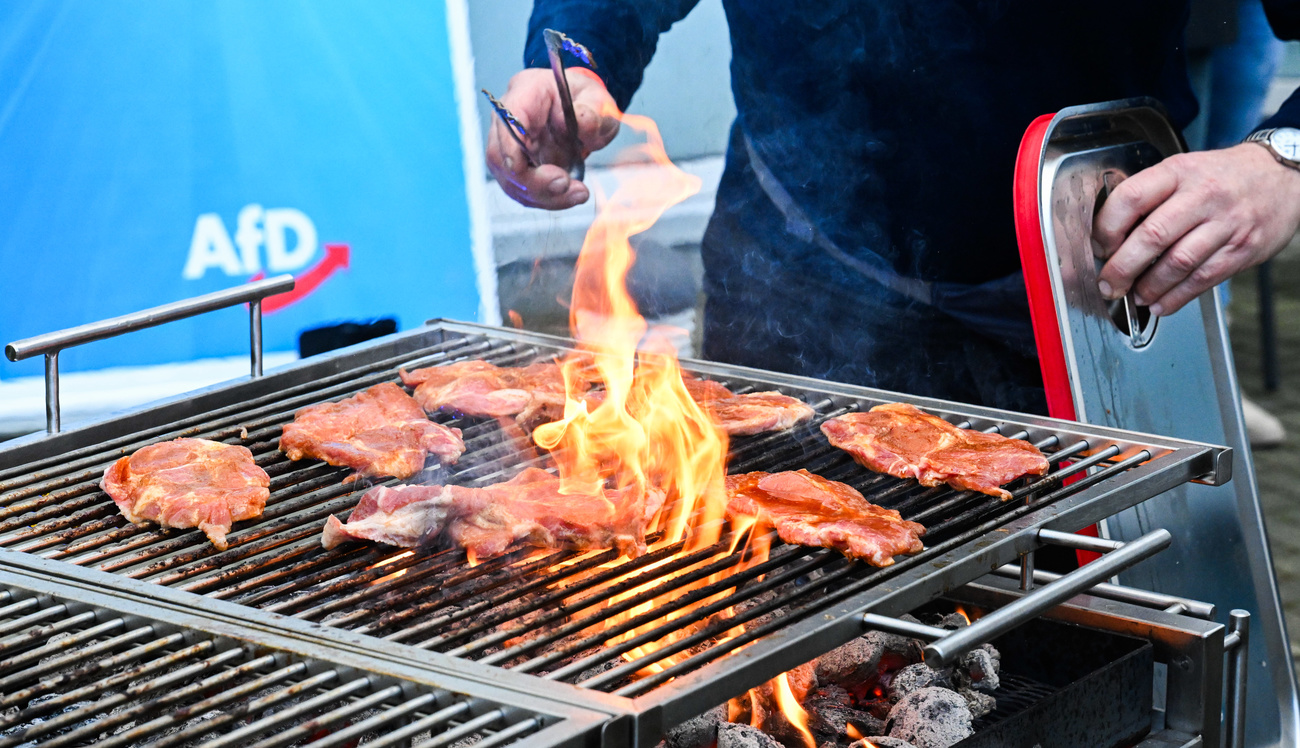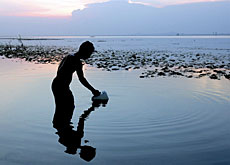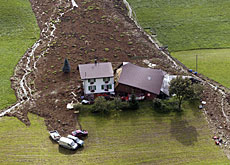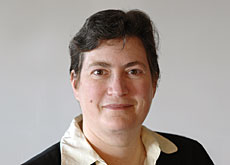The downstream effects of climate change

Over the next 50 years, rising temperatures are expected to put pressure on Switzerland's relatively abundant supplies of water.
This will have a knock-on effect on water quality, farming techniques and fish stocks, and lead to tough competition for water resources between farmers, power companies, the eco-system, consumers and regions.
In terms of overall quantities of water, compared with other countries, the situation in Switzerland is likely to remain favourable – “we won’t develop into a desert”, said Martin Pfaundler from the Federal Environment Office.
But “Europe’s water tower”, which holds some six per cent of the continent’s freshwater reserves, is not immune to future internal conflicts over its water resources.
“If situations like the 2003 summer heatwave reoccur more frequently – every second or third year say – there might be periods of increased regional competition [within Switzerland] between consumers, hydropower, farmers and ecological groups,” Pfaundler told swissinfo.
The problem could become particularly acute if the number of farmers installing irrigation equipment continues to rise. In the future agricultural experts predict a fourfold increase in the use of irrigation on Swiss farms – from 40,000 to 150,000 hectares.
Less water will also affect the production of hydroelectric power and will affect nuclear power plants, which rely on water from Swiss rivers to cool the reactors and may have to reduce their output.
Better coordination
New rules have to be established to decide how Switzerland distributes its water during dry spells, explained Bruno Schädler from the environment office.
Overall water resource management in Switzerland should be reorganised, say experts, and decisions taken based on water basins. Instead of looking at one source of groundwater, or a particular river or lake, water managers should consider a much larger catchment area and ensure wider coordination.
“The European Union is quite hot on this,” said David Livingstone, senior research scientist from the Federal Institute of Aquatic Science. “But it’s particularly difficult in Switzerland as river basins tend to be managed by different cantons and communication is not always easy.”
If you want particular water quality in one part of the river you have to look at the quality in the whole basin and this means involving all the cantons that have an interest, he added.
Quality v quantity
Water quality, for Livingstone, is crucial: “It’s not just about having enough water but having water of an acceptable quality.”
The water expert would particularly like to see more research into groundwater.
“In 2003 a lot of groundwater sources had to be turned off as the concentrations of nitrates and other irons increased so much that groundwater was no longer usable for drinking and they had to rely more on the lakes,” he explained.
But while lakes are currently less at risk than groundwater, this might change in the future. One particular threat comes from blue-green bacterial algae blooms, according to Livingstone.
About three million people depend on their water from Lake Constance, including residents in neighbouring Germany and Austria, and 750,000 people rely on water from Lake Zurich, both of which are susceptible to algae blooms.
“Rising temperatures can cause bacterial algae blooms to increase and a greater chance that toxic substances are released into the lakes, reducing the quality of raw drinking water,” he explained.
Fishy business
Another consequence of global warming is the increase in water temperature in Swiss rivers – an average of 1.5 degrees Celsius over the past 20 years –, which is causing havoc among certain fish populations.
The reported trout catch in streams and rivers, for example, has plummeted by 60 per cent since the early 1980s. Warmer water forces fish to flee upriver, squeezing the size of their habitat made worse by man-made barriers.
This drop has been accompanied by regional declines in fish health in Switzerland, and the spread of diseases such as proliferative kidney disease in brown trout, which occurs when temperatures are above 15 degrees Celsius.
“Over the next fifty years river fish will be increasingly affected by climate change, in particular trout, grayling and bullhead,” explained Armin Peter, a fish expert from the Federal Institute of Aquatic Science.
One realistic solution, which Switzerland has already started to implement, involves restoring rivers to their natural condition and allowing vegetation to grow back on riverbanks; this helps lower river temperatures, explained Peter.
swissinfo, Simon Bradley
Switzerland has 6% of all freshwater reserves in Europe.
Lakes and reservoirs account for half the stored water, glaciers 28%, groundwater 20% and rivers and dams 2%.
Switzerland receives twice the amount of precipitation than the European average.
Each year Switzerland’s rivers and streams provide 53.5 billion cubic metres of water for its neighbours.
Water companies pump 1.1 billion cubic metres of water each year, which is the equivalent of Lake Biel. Some 83 per cent of this water comes from the ground, with the remainder taken from lakes.
Daily water consumption per inhabitant is about 400 litres. This includes industrial, agricultural and domestic uses of water.
Annual water supply per inhabitant: Switzerland: 5,560 cubic metres; Israel: 115; Netherlands: 690; Germany: 1,305; Spain: 2,785).
Typical average daily consumption of water per person in Europe is 150 litres.
Typical average daily consumption of water per person in the Sahara region is 30 litres.
30 litres of water is used a day per person for toilet flushing in Switzerland.
The Advisory Body on Climate Change (OcCC) published a key climate report in March 2007 entitled “Switzerland in 2050”, which details the effects rising temperatures will have on ecology, agriculture, health, tourism, water supply and infrastructure in Switzerland by 2050.
According to the authors, the Swiss can expect more frequent extreme weather patterns, resulting in floods and mudslides in winter and spring, and summer heatwaves.
Temperatures are due to rise by two degrees Celsius in autumn, winter and spring, and three degrees in summer, compared with 1990. The report’s authors also foresee an increase of precipitation in winter by ten per cent and decrease in summer by 20 per cent.
In winter, mid-range mountain regions will receive more rain than snow, whereas those areas above 2,000 metres will get heavier snowfalls.
Overall, available water resources will dwindle. As glaciers slowly melt away, around 75 per cent of water from glaciers is expected to disappear by 2050.

In compliance with the JTI standards
More: SWI swissinfo.ch certified by the Journalism Trust Initiative












You can find an overview of ongoing debates with our journalists here . Please join us!
If you want to start a conversation about a topic raised in this article or want to report factual errors, email us at english@swissinfo.ch.